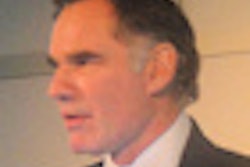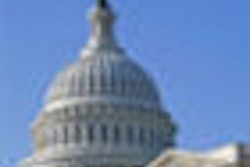
The presidential election may be over, but the potential ramifications of its outcome linger. What does radiology face in both the short and long term? AuntMinnie.com spoke to several policy-watchers on the question as radiology struggles to understand the meaning of the 2012 election.
Short-term challenges
In the coming congressional lame duck period, diagnostic imaging could be targeted to help pay for another interim fix to the sustainable growth rate (SGR) formula, said Cynthia Moran, assistant executive director of the American College of Radiology (ACR). It's likely that the heavy lifting regarding the SGR will be added to the next Congress' to-do list, and the current legislative body will finish out its year with patches that will buy time, she said.
"In the next three to four weeks, it will be interesting to see how much of [the SGR] gets pushed into a bigger deal that would include tax reform," Moran told AuntMinnie.com. "And the smaller the SGR fix package, the shorter the extension will be -- and every dollar will be scrutinized, which makes imaging vulnerable."
All physicians and hospitals are going to be held to task to come up with savings and efficiencies, and the U.S. Centers for Medicare and Medicaid Services (CMS) will continue to squeeze money from specialties and redistribute it to primary care to accommodate the influx of people who now have healthcare coverage, Moran said.
Facing a fiscal crunch
It's unfortunate that the perennial SGR debate is coming up at a time when the government is facing a fiscal crunch, said Dr. Frank Lexa, from the Wharton School of the University of Pennsylvania.
"It would not shock me if [Congress] used the 'fiscal cliff' as an excuse to cut Medicare reimbursement," he told AuntMinnie.com.
All this clamping down on reimbursement will be relentless, Moran said. "I think we're just going to see more of the same [cuts to fee-for-service that we've been seeing] -- except accelerated."
In the long term, radiologists must participate in the task of defining inefficient and unnecessary imaging use, according to Moran.
"If we can't come up with successful strategies to control utilization, the only response [from policymakers] will be brute force; they won't distinguish between good providers and bad," she said. "It's extremely important to come together and support some kind of long-term utilization strategy that teaches referring physicians to make correct orders. And once we come up with these utilization policies, we need to make sure we benefit from the savings that will come from using them."
PPACA -- here to stay
There were radiologists who had hoped that the U.S. Supreme Court would overturn the Patient Protection and Affordable Care Act (PPACA) of 2010; the problem of healthcare reform would then just go away, according to Lexa. When that didn't happen, their hopes were transferred to the election. Now that the election has passed, radiologists will need to confront the fact that much of PPACA will likely be part of the healthcare landscape.
"With Obama re-elected, healthcare reform is going to proceed -- the ACA's trajectory will go forward," he said. "The president will want to implement the bill along the lines of the original blueprint, while some Congress members will want to modify that. But people can't ignore this legislation anymore."
Radiologists would do well to pay very close attention to what happens during the upcoming fiscal negotiations -- and to get involved, Lexa said.
"Radiologists need to be much more politically involved," he said. "We want to make sure that whatever system develops, we'll have a central role in diagnosing and preventing disease."
Self-referral relief?
One positive development for radiology is that there's increasing interest in examining utilization abuses under the Stark anti-self-referral law, Moran said. Earlier this month, the U.S. Government Accountability Office (GAO) issued a report that outlined more than $100 million in annual unnecessary spending in CT and MRI alone, and it recommended steps to curb the practice.
However, it will remain to be seen how much political heat Congress is willing to take over whether to end the in-office exemption to the Stark law, according to Moran.
"Will the political heat be worth the savings they think they can get from enforcing Stark?" she asked. "And can we put utilization policies in place that establish better rules of the road going forward? It's unclear."
Change as opportunity
Radiologists could miss the opportunities that change brings if they're focused on the loss of the known and familiar, according to Tom Greeson, a partner at Reed Smith of Falls Church, VA, who specializes in radiology-related regulatory matters. But the radiology practice that carefully considers how to position itself for a future that has not been fully revealed is more likely to seize the opportunities.
In a letter to clients, Greeson and fellow Reed Smith partner Paul Pitts outlined their view of the short-term and midterm horizon postelection.
-
CMS will continue to encourage integration efforts via its shared-savings program, which calls for the creation of accountable care organizations (ACOs) to coordinate care, encourage the use of evidence-based measures, reduce costs, and achieve better outcomes for patients.
"I don't think these integration efforts mean that hospital employment for radiologists is inevitable," Greeson told AuntMinnie.com. "Everyone is better off when radiologists' group culture continues -- radiologists are better suited than hospital administrations for recruiting specialists, scheduling services, and determining compensation -- and employment isn't necessary to achieve that group role. A well-drawn contract can address a health system's desire for integration while preserving the independence of a radiology practice."
-
Radiology's challenge may be a contest between commoditization of professional services via teleradiology and the local delivery of those same services, what Greeson and Pitts call the "value proposition."
"The groups that succeed in offering a viable alternative to cost-based marketing of radiology services will learn to sell the value proposition for their services locally," Greeson and Pitts wrote. "Radiologists can be the gatekeepers for appropriate care."
-
The efficiency of and patient preference for freestanding imaging won't change -- but these freestanding facilities will be part of an integrated delivery system, according to Greeson and Pitts. And hospitals will probably have some ownership in more of the outpatient imaging that is provided in the U.S.
"The question will be: What steps can freestanding centers take to integrate themselves into the healthcare system?" Greeson said. "We recommend that radiologists work to 'be at the table' and strive for ownership and participation in governance and management of these facilities."
Radiology groups will have to remain vigilant to understand the rules of how services are ordered, delivered, and billed for Medicare, as the government is likely to intensify its enforcement of these rules, Greeson and Pitts wrote.
As the integration project continues, "we foresee greater competition in delivery of imaging services in the future and more disputes regarding whether health systems and large practices misuse their market power," according to Greeson and Pitts.
-
Self-referral will be increasingly scrutinized. "Both governmental and private payors appear now to perceive [that] the conflicts of interest caused by referral to a physician's own imaging services is a driver in increased healthcare costs," Greeson and Pitts wrote.
"The Affordable Care Act is here to stay, and it is incumbent upon radiologists to think about how to best position themselves to respond," Greeson told AuntMinnie.com. "Even if Gov. Romney had been elected, changes to the health system were inevitable. In some markets, accountability, transparency, and greater integration are being driven as much by commercial payors as by the government. We are on a trajectory to reform how healthcare services are organized, delivered, and reimbursed."




















